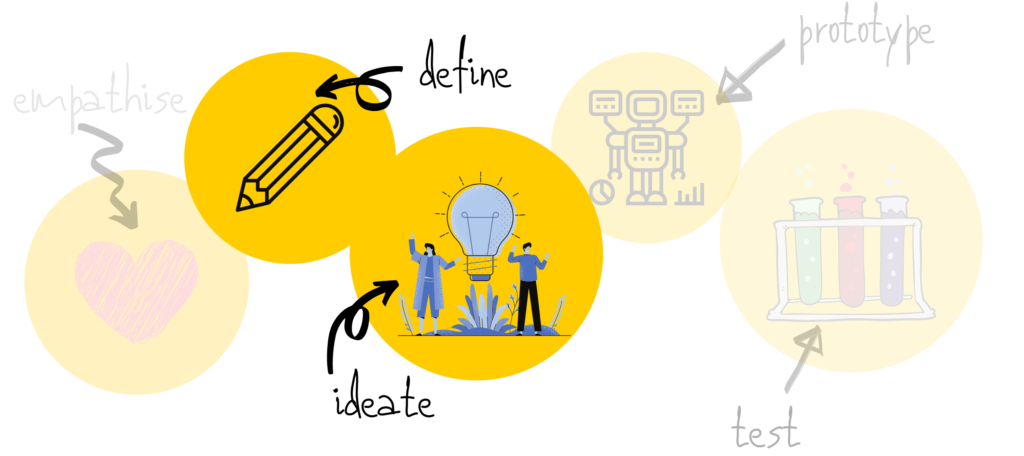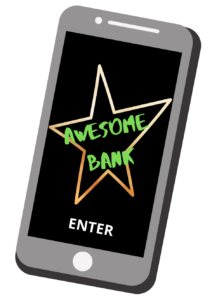In our first blog we set out how legal design uses empathy to understand the users of legal. We met Awesome, a Digital Bank offering an alternative to traditional banking for those customers looking to do things differently.
In this blog we are moving on to the next two stages of legal design thinking:

define.
Once legal designers have listened and have mapped out the problem or need, they can then define it. This is different from traditional law, where the need is often defined by the client. A standard client request is “we need some terms and conditions”. It will generate standard questions from the lawyer such as, “what do you need them to contain?” which is likely followed by a brief pause as the client asks himself “I thought that’s what I’m paying you to tell me”!
In legal design, the problem or need is defined in a different way. Before attending to the content, the legal designer will think about what the terms & conditions are looking to achieve and will revisit the empathise stage.
The definition here answers the question,
“what are they really looking to achieve here?”
The answer to this question can often change the solution completely.
Let’s take another example, a client looking to draft a shareholder’s agreement. When defining the need, it might include things such as the need to satisfy an investor, or to encourage investment, or to solve a disagreement or satisfy an insurance policy condition. The solution to this might be a shareholder’s agreement, but it might not, and this is really at the heart of understanding legal design.

understanding need.
Let’s go back to Awesome Bank. If Awesome were to come to a legal designer looking for terms and conditions, the need would be defined more broadly. Why did Awesome make this request, what are they looking to achieve? In the case of terms and conditions that might be to comply with regulation, or to document the relationship with a new customer. By empathising with the customer, the problem might be defined further to include the need to increase trust in Awesome Bank or the need for customers to receive something they can understand.
Empathy and defining the problem differently because of that empathy, mean that legal designers can set off armed with information that will generate more value for the client. Terms of Business are a great example of this.
ideate.
Legal designers ideate. What on earth does that mean? At a basic level, this means to form an idea of how to solve the need. Brainstorming. What is key here is that the solution is not cookie cutter. There is no template to be filled out.

A legal designer might group things by themes. The themes might be things that you would not expect to see from a lawyer about to draft a contract, but they will be relevant to what has gone before.
Let’s go back to Awesome Bank and their ts&cs. The themes here might be: (i) needed by regulation, (ii) needed to make the customer journey better (iii) needed to increase trust, and (iv) needed to document the relationship. The information would be prioritised with the users in mind.
A legal designer will have tools that they might use at this stage. Some of these will be familiar to you in other contexts: mind-maps, six hat thinking, storyboarding, etc. We like post-ups combined with affinity maps during the creative ideate stage.
The important thing here is that this is not about shoehorning the problem into a solution. It is about finding the solution that works for the problem.
If you want a template, if you want a lawyer that has a model form, then perhaps you are not quite ready for legal design. If you want innovation and solutions that add value and are designed with the users in mind, then why don’t you give us a call and we can talk about what legal design can do for you.